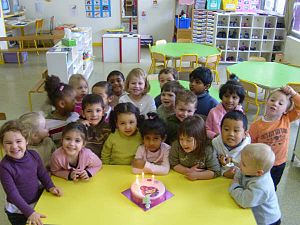
. . . Don Austin, sitting in a Hennepin County jail cell, was 15 when he decided he wanted to learn to read — really, really wanted to learn.In April 2008, he stole a car and caused an accident that killed a woman. He spent the next 20 months locked up in Hennepin jails while the court system worked out whether he would be tried as an adult.
While he waited to go to trial, Austin was supposed to have the same six-hour school day as any other Minnesota child, including two hours of special education. Instead, for much of that time, he got just an hour a day.In jail, literally captive, Austin fell in love with reading. For the first time in his life, he asked if he could spend more time in class. Minneapolis Public Schools' answer: No.
"He was asking his teacher to let him go to school," said Amy Goetz, founder of the School Law Center in St. Paul and Austin's attorney. "It's incomprehensible that he would be asking for education and not getting it.". . . Minnesota spends 3.7 times as much per prisoner as it does per public school student. According to census data, the state has the 20th-highest juvenile incarceration rate in the nation, with 259 of every 100,000 children imprisoned.The National Council on Disability, a federal agency, estimates that 30 percent of children in the juvenile justice system have learning disabilities. Other studies put the figure as high as 70 percent. Poor, minority children are particularly at risk.
About 15 percent of the general population has some kind of neurological disorder that makes reading, writing, processing instructions and other tasks difficult without specialized support. Someone with dyslexia, for instance, can't understand written words the way other students do.
Children with such learning disorders usually are as smart as their peers. Some have another disability, such as attention deficit disorder, autism or behavioral disorders.
More than half of state's jailed juveniles are learning disabled
In Minnesota, more than half of incarcerated juveniles have some kind of learning disability, according to the PACER Center, and a third of incarcerated children have a persistent mental health issue, as opposed to 14 percent of all kids.
Kids in the juvenile justice system are twice as likely to have been abused, and 75 percent qualified for free- or reduced-price lunch, vs. 39 percent of students statewide.
"They often feel frustration and isolation in school," explained Lili Garfinkel, coordinator of PACER's Juvenile Justice Project. "They often have few friends; many are bullied; and they may 'act up' to cover the fact they are unable to participate as equals in their classroom.
"They may not have the language or social skills to navigate appropriate interactions in school," Garfinkel noted. "The behaviors may be serious enough to cause them to be suspended truant, or, in more serious cases, expelled. By not attending school, however, they become further behind and overwhelmed."
Girls with unaddressed learning disabilities often act out by withdrawing, while boys can become defiant or aggressive, experts say. Making things worse, some learning disabilities are accompanied by communication problems and poor comprehension.
"Such characteristics cause children with disabilities to appear 'uncooperative,' 'disrespectful,' 'angry,' and 'irritable,' and act to increase the likelihood that these youths will have negative encounters with the juvenile justice system," a 1995 study found.
The cycle is particularly pernicious for African-American boys, who frequently end up in alternative schools; few of them graduate.
"Almost always when you look at their records, you see kids who were turning over tables in the fourth grade when it was time to read," said Goetz. "As they feel their education program is a failure, they act out. They spill out into the community. Kids like Don feel helpless and hopeless, and there are all those temptations out there."
Once a learning disability has been diagnosed, a student often ends up with a formal plan for services known as an Individualized Education Program, or IEP. School administrators are legally obligated to follow a student's IEP unless they go through a complicated process involving the student's parents to change it. . . .

![Reblog this post [with Zemanta]](http://img.zemanta.com/reblog_e.png?x-id=9eff3c22-126b-417b-90e9-611a3c183cf7)



